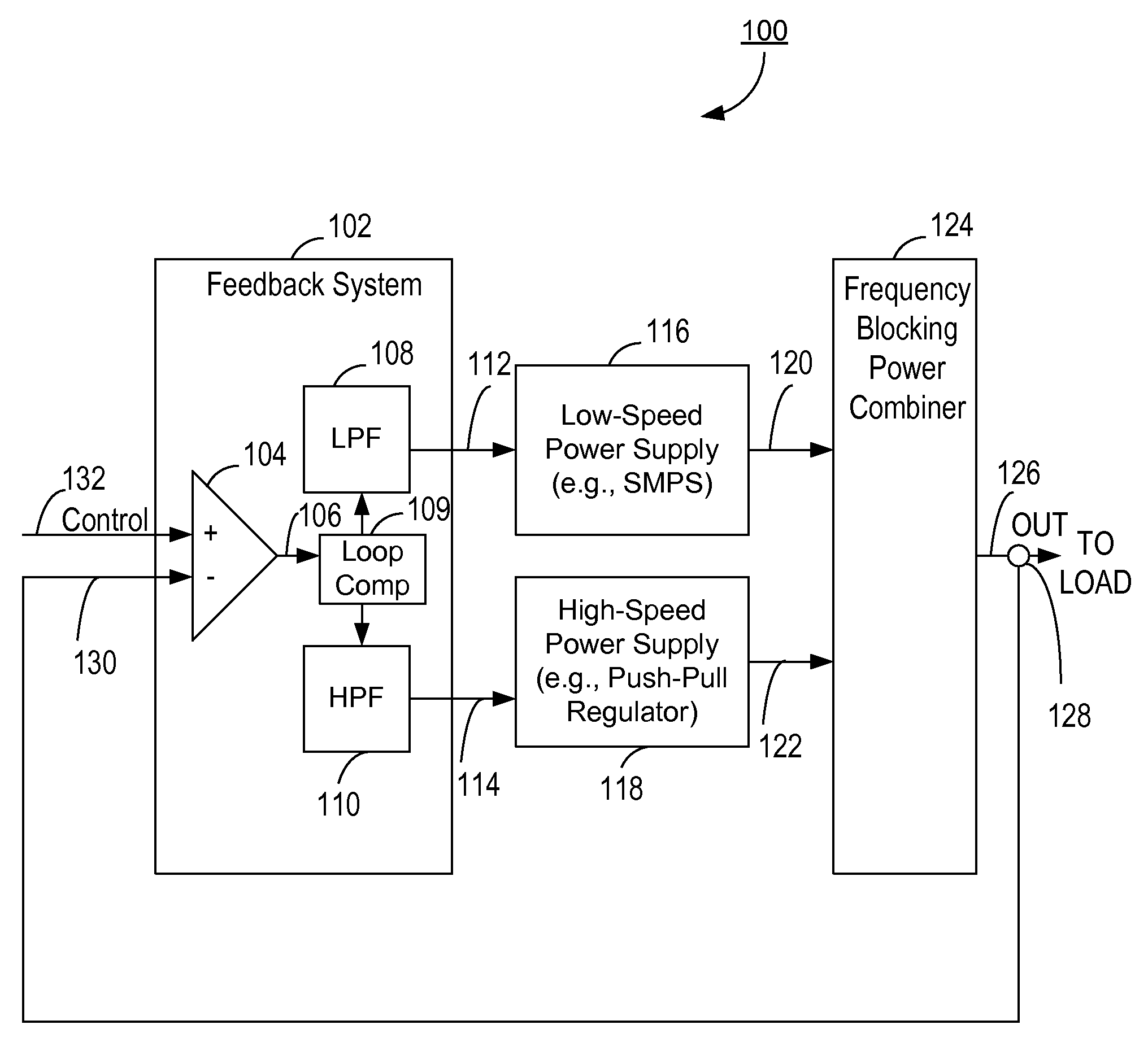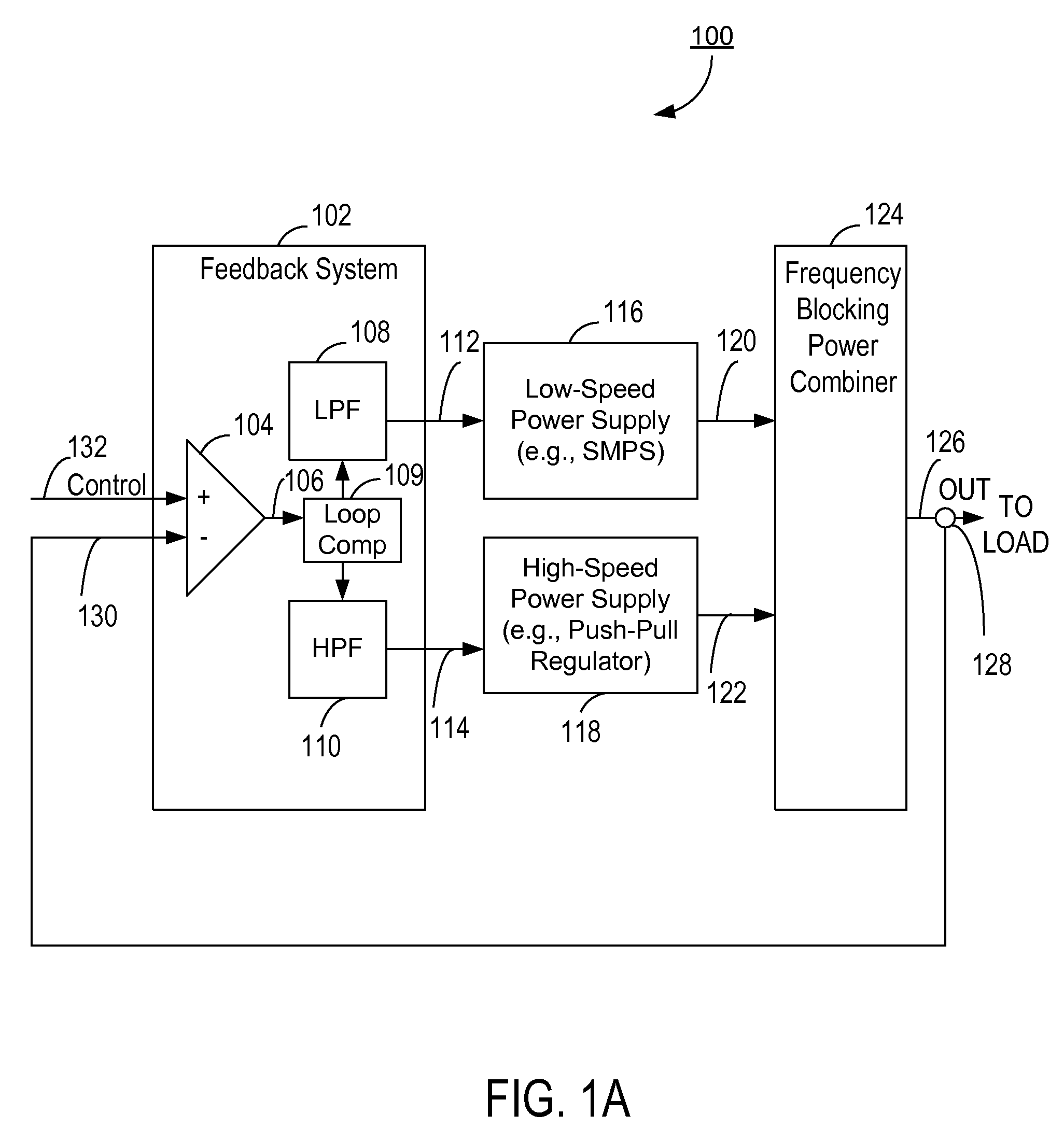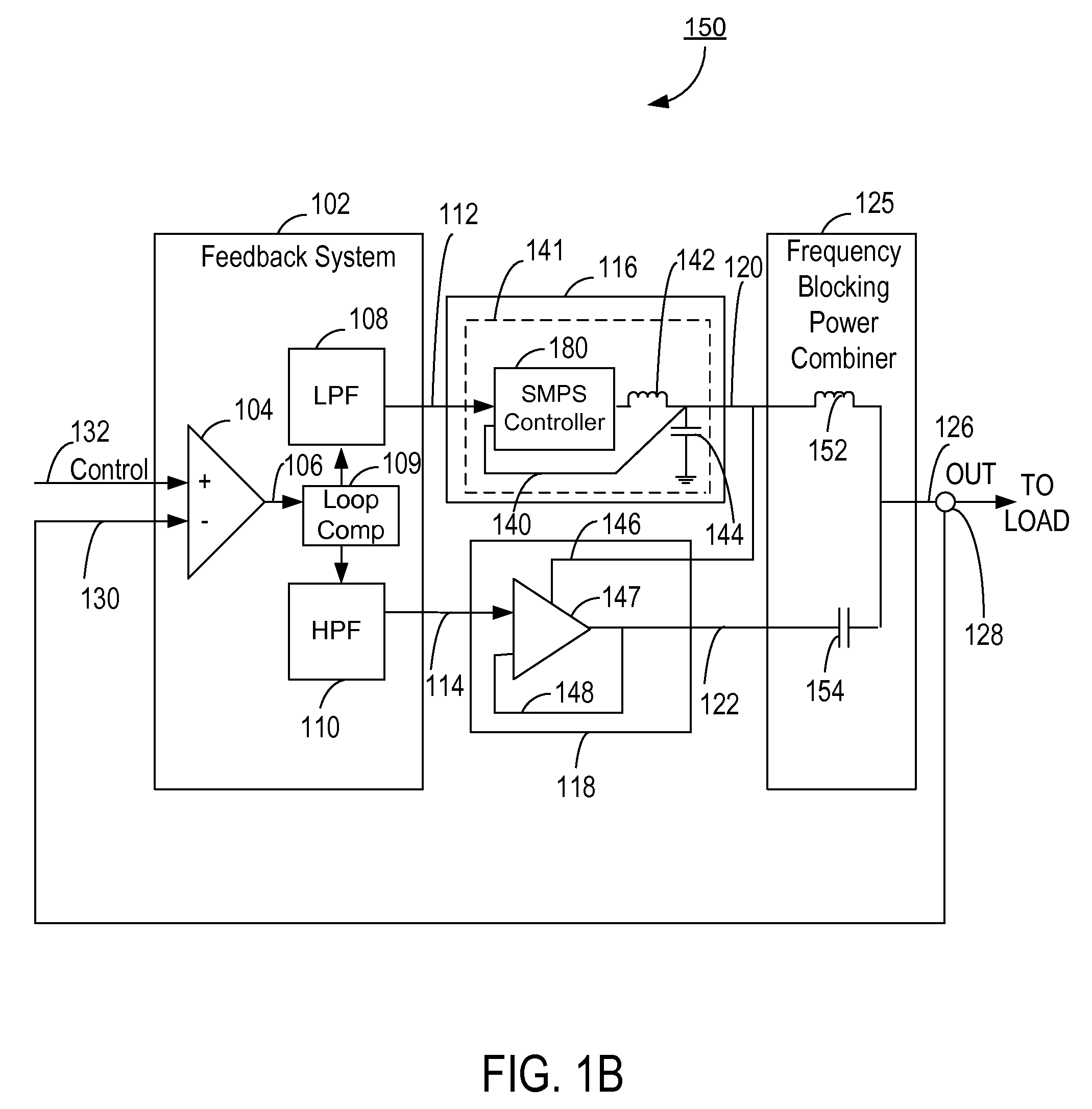Power combining power supply system
a power supply system and power combining technology, applied in the field of power supply, can solve the problems of poor power conversion efficiency of such a linear regulator, inability to deliver sufficiently high frequency components of power, and the effect of high bandwidth, good efficiency and reduced effect of primary leakage inductan
- Summary
- Abstract
- Description
- Claims
- Application Information
AI Technical Summary
Benefits of technology
Problems solved by technology
Method used
Image
Examples
first embodiment
[0029]FIG. 1B illustrates a power supply system 150 with a frequency blocking power combiner 125 according to the present invention. The power supply system 150 includes a low-speed power supply 116, comprising SMPS 141 in this example. The SMPS 141 includes an SMPS controller 180, an inductor 142, an output capacitor 144, and a local feedback loop 140 for regulating the SMPS 141. Note that FIG. 1B merely illustrates a simplified conceptual view of the SMPS 141, and not all components of the SMPS 141 are shown in FIG. 1B. The SMPS 141 can be, in this example, a step-down (buck) design, with inductor 142 being the switching inductor of the SMPS 141 and the capacitor 144 being the output capacitor of the SMPS 141, although other switching regulator topologies could be used. The SMPS controller 180 operates by attempting to equalize the voltage at the low-speed power supply control 112 with the voltage at its output 120. Other details of the SMPS controller 180 are not necessary to be ...
second embodiment
[0040]FIG. 1C illustrates a power supply system 170 with a frequency blocking power combiner 127 according to the present invention. The power supply system 170 of FIG. 1C is substantially the same as the power supply system 150 of FIG. 1B, except that the frequency blocking combiner 127 in this embodiment is comprised of the transformer 160, the capacitor 154, and the resistor 156.
[0041]The frequency blocking power combiner 127 in this embodiment includes a transformer 160 to sum the output current 122 from the push-pull regulator 147 to the output current 120 from the SMPS 141. As shown in FIG. 1C, the transformer 160 has its node 1 coupled to the output 120 of the SMPS 141, node 2 coupled to the output 126 of the power supply system 170, node 3 coupled to ground, and node 4 coupled to the output 122 of the push-pull regulator 147. The primary side of the transformer 160 acts as a low pass filter for the output 120 of the SMPS 141 and thus provides the ripple filtering function de...
PUM
 Login to View More
Login to View More Abstract
Description
Claims
Application Information
 Login to View More
Login to View More - R&D
- Intellectual Property
- Life Sciences
- Materials
- Tech Scout
- Unparalleled Data Quality
- Higher Quality Content
- 60% Fewer Hallucinations
Browse by: Latest US Patents, China's latest patents, Technical Efficacy Thesaurus, Application Domain, Technology Topic, Popular Technical Reports.
© 2025 PatSnap. All rights reserved.Legal|Privacy policy|Modern Slavery Act Transparency Statement|Sitemap|About US| Contact US: help@patsnap.com



